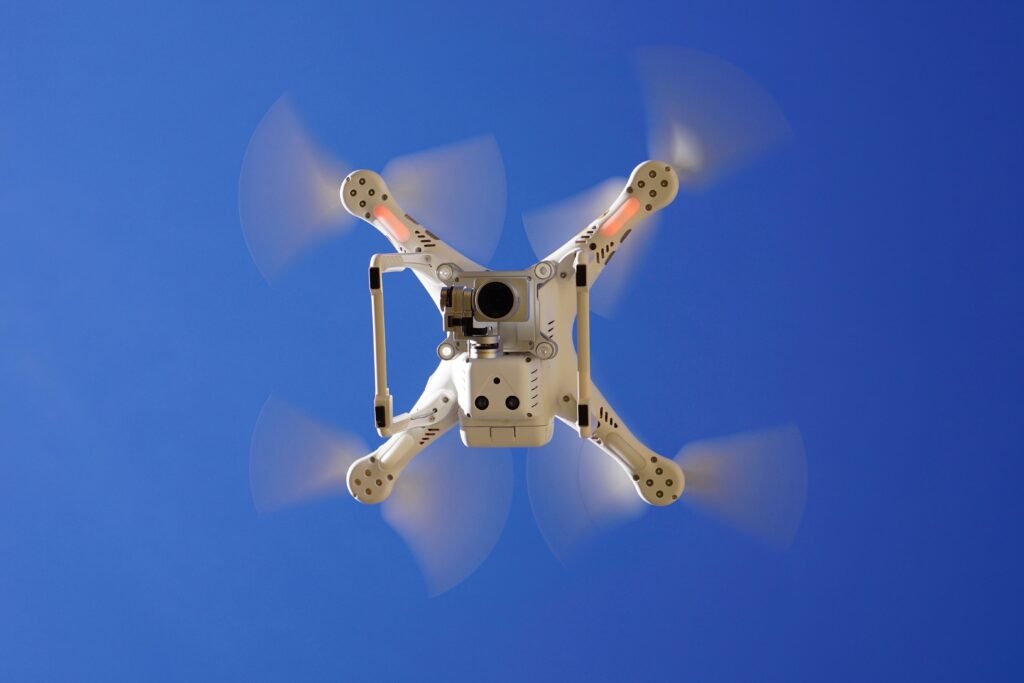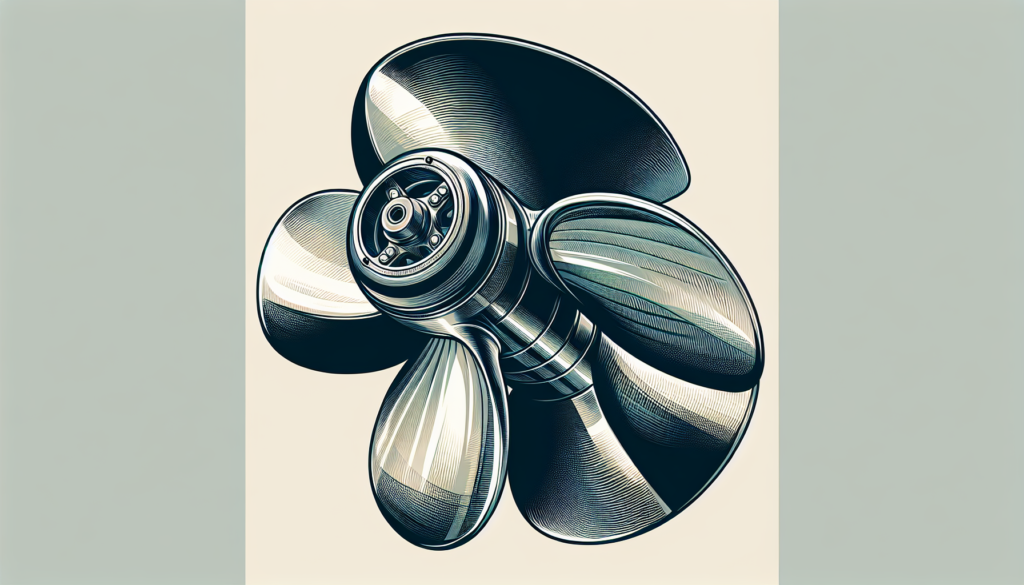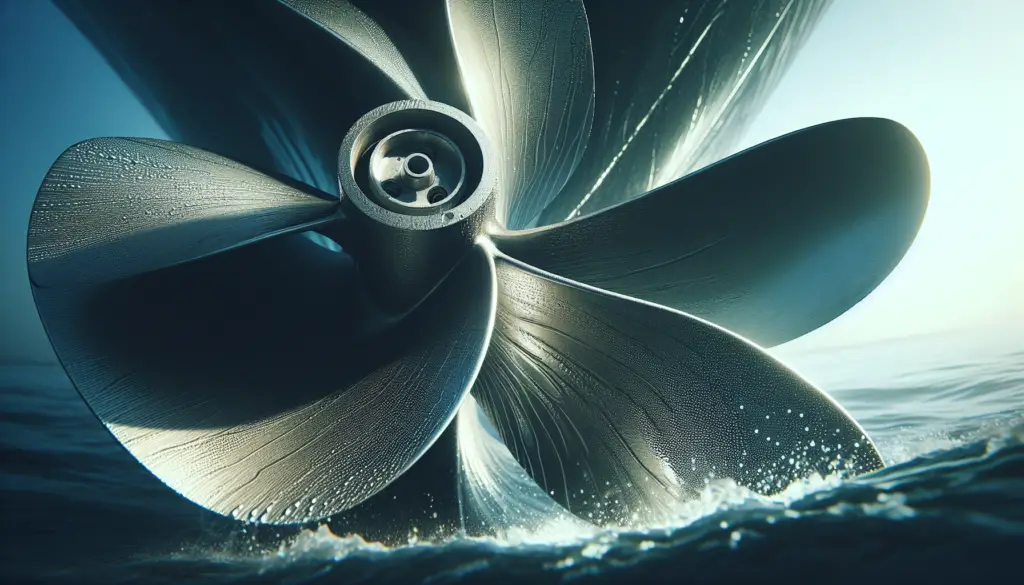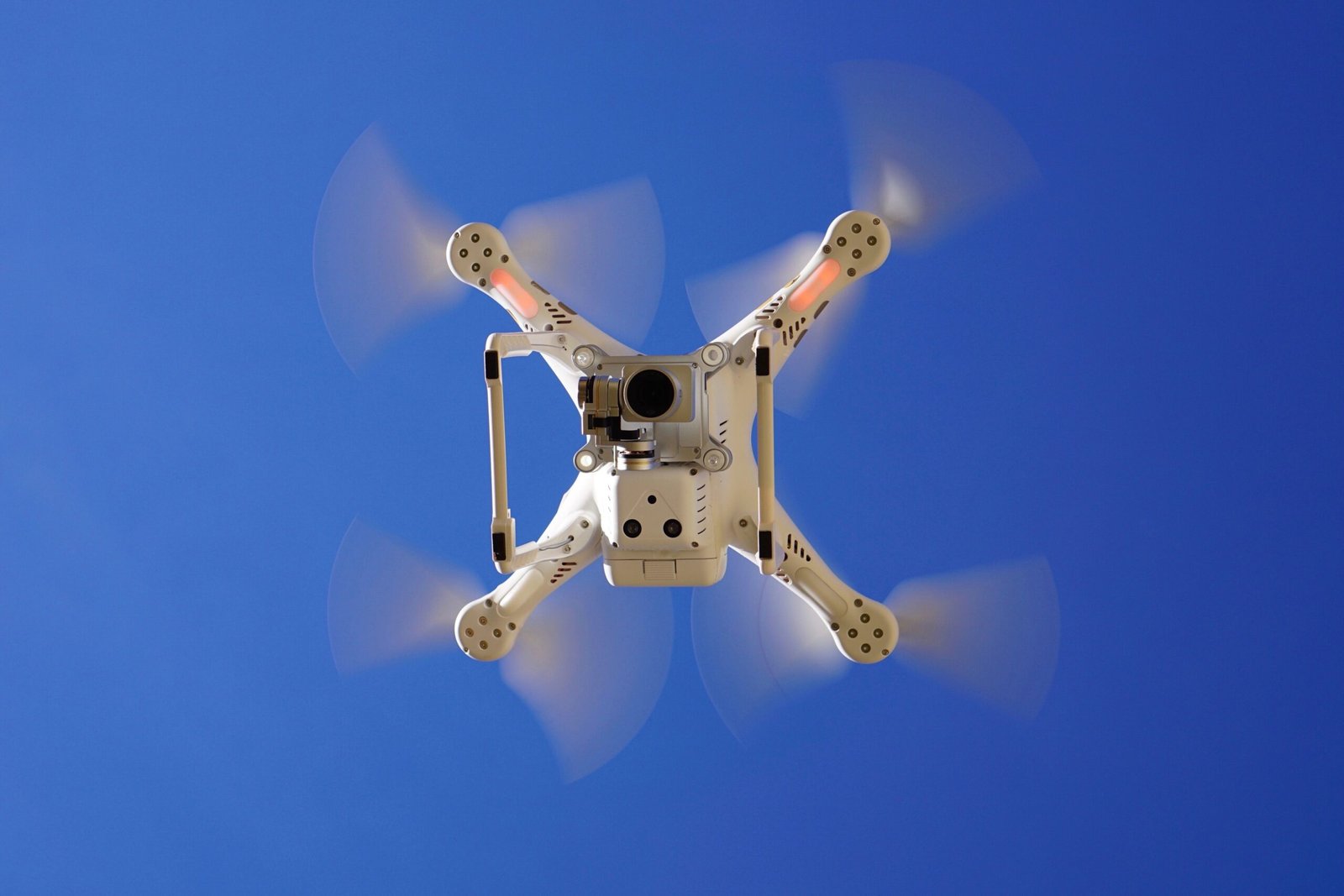So you’ve finally decided to take the plunge and invest in a boat, but now you find yourself facing a choice that seems overwhelming – which propeller should you choose? Whether you’re a seasoned boater or a first-time owner, selecting the right propeller for your boat is crucial to optimize performance and efficiency. In this comprehensive Buyer’s Guide, we will walk you through the important factors to consider, from understanding the basics of propeller anatomy to finding the perfect match for your boat’s specific needs. Get ready to set sail with confidence as we demystify the world of boat propellers and help you make the right decision.
Understanding Propellers
What is a boat propeller?
A boat propeller is a crucial component of a boat’s propulsion system. It is responsible for generating the necessary thrust to move the boat through the water. The propeller consists of rotating blades that create a pressure difference, pulling the boat forward. It plays a vital role in determining a boat’s speed, maneuverability, fuel efficiency, and overall performance on the water.
How does a boat propeller work?
When the boat’s engine generates power, it is transmitted to the propeller through a driveshaft or a similar mechanism. The propeller’s blades are curved, which causes water to flow differently on either side of the blade while it rotates. As the blades spin, they create areas of higher and lower pressure. The pressure difference between the two sides of the blades generates a force known as lift, which propels the boat forward. The angle and shape of the blades determine the efficiency and performance of the propeller.
Types of boat propellers
Boat propellers come in various types, each designed for specific boating applications and requirements. The most common types include fixed propellers, folding propellers, and adjustable pitch propellers. Fixed propellers have a fixed blade angle and are widely used in recreational boating. Folding propellers are designed to reduce drag when sailing and automatically fold back when the engine is not in use. Adjustable pitch propellers allow the boat operator to change the blade angle to optimize performance in different conditions.
Factors to Consider
Boat type and size
The type and size of your boat play a vital role in determining the appropriate propeller. Different boat types and sizes require different propellers to achieve optimal performance. Factors such as weight, length, and hull design need to be considered to ensure the propeller’s compatibility with your boat. It is essential to consult the boat manufacturer or a propeller specialist to determine the recommended propeller specifications for your specific boat type and size.
Boat engine specifications
Understanding your boat engine’s specifications is crucial in choosing the right propeller. Factors such as engine horsepower, maximum RPM (revolutions per minute), and gear ratio influence propeller performance. Manufacturers provide recommended guidelines for propeller selection based on engine specifications. You need to consider these guidelines to ensure your propeller choice matches your engine’s capabilities and maximizes overall boat performance.
Intended use and boat performance
Consider how you intend to use your boat when selecting a propeller. Are you seeking speed, fuel efficiency, or towing capabilities? If you enjoy water sports or plan to carry heavy loads, a propeller with more blades might provide better acceleration and towing power. If speed is your priority, a propeller with a higher pitch may be suitable. Understanding your desired performance and goals will help guide you in selecting the right propeller for your specific needs.
Water conditions and environment
The water conditions and environment in which you primarily operate your boat should influence your propeller choice. Factors such as average water depth, current, wind conditions, and even water salinity can affect propeller performance. For example, shallow water or excessive vegetation may require a propeller with a higher blade count to prevent damage or clogging. It is essential to assess the typical conditions you will encounter and select a propeller that can withstand and perform well in those conditions.
Budget considerations
Propellers come in a range of prices, and it is important to consider your budget when making your selection. Higher-quality materials and more advanced designs often come at a higher cost. It is crucial to strike a balance between your budget and the performance you desire. While it may be tempting to opt for a cheaper propeller, it is important to consider the long-term costs of potential repairs or replacements that may arise from using an inadequately suited propeller.

Propeller Materials
Aluminum
Aluminum propellers are widely used and offer a cost-effective option for many boaters. They are lighter in weight compared to other materials, making them ideal for smaller boats and those seeking fuel efficiency. Aluminum propellers are also known for their durability and corrosion resistance. However, they may not be as strong as other materials and can be prone to damage from impacts or excessive wear.
Stainless steel
Stainless steel propellers are highly regarded for their strength and durability. They are suitable for boats that require maximum performance, such as high-speed vessels or those operating in rough water conditions. Stainless steel propellers are resistant to damage from impacts and are less likely to deform or bend. However, they are generally more expensive than aluminum propellers and may weigh more, impacting fuel efficiency.
Composite
Composite propellers are made from a combination of materials, often including a mix of fiberglass and other reinforced components. They offer a balance between strength, performance, and cost-effectiveness. Composite propellers can be a suitable option for recreational boaters looking for a durable and lightweight solution. However, they may not offer the same level of performance as stainless steel propellers, particularly in high-speed applications.
Plastic
Plastic propellers are typically made from high-strength polymers and are commonly used on smaller boats or as a backup option. They are lightweight, cost-effective, and resistant to corrosion. Plastic propellers are less susceptible to damage from impacts and are quieter during operation. However, they are generally not as durable as other materials and may wear faster over time.
Propeller Diameter and Pitch
Understanding diameter and pitch
The propeller diameter refers to the distance across the circle formed by the propeller blades. It is measured in inches. A larger diameter generally provides more thrust and better low-speed performance. However, it can also lead to reduced top speed and higher fuel consumption. The propeller pitch refers to the distance a propeller would theoretically move forward in one revolution in a solid medium. It is also measured in inches. A higher pitch results in a faster top speed but may sacrifice low-speed performance and acceleration.
How to choose the right diameter and pitch
Choosing the right diameter and pitch requires considering factors such as boat size, engine specifications, and the desired performance. Manufacturers often provide guidelines or propeller selection charts based on these factors. It is important to match the propeller diameter and pitch to your boat and engine specifications to achieve optimal performance. Experimenting with different propellers or seeking the advice of a propeller specialist can help fine-tune your selection.

Number of Blades
Two-blade propellers
Two-blade propellers are commonly found on smaller boats or sailboats where speed is a priority. They offer good top speed performance but may lack acceleration and pushing power. Two-blade propellers generate less drag, resulting in increased fuel efficiency. They are ideal for boats with limited space for a larger propeller or for boaters seeking better sailing performance.
Three-blade propellers
Three-blade propellers are the most common choice for a wide range of boats. They provide a balance between performance, acceleration, and fuel efficiency. Three-blade propellers offer good thrust, smooth operation, and are suitable for various applications, including recreational boating, fishing, and water sports. They are versatile and can handle a range of water conditions.
Four-blade propellers
Four-blade propellers are known for their superior acceleration and low-speed handling. They are often used in applications where initial acceleration is critical, such as towing or cruising at low speeds. Four-blade propellers offer increased thrust and pulling power, making them suitable for heavy loads or larger boats. However, they may slightly decrease top speed and fuel efficiency compared to three-blade propellers.
Five-blade propellers
Five-blade propellers are less common but offer specific advantages in certain situations. They provide excellent low-speed thrust and maneuverability, making them suitable for boats operating in tight spaces or with high maneuvering requirements. Five-blade propellers can also reduce vibrations and noise during operation. However, they may not achieve the same top speed as lower blade count propellers and may result in decreased fuel efficiency.
Choosing the right blade count
Choosing the appropriate blade count depends on your boat’s intended use, desired performance, and water conditions. Three-blade propellers are a popular choice for their versatility and balanced performance. However, if you prioritize acceleration, heavy towing, or low-speed maneuverability, four or five-blade propellers may be more suitable. It is important to consider your boat’s specifications and consult with experts to determine the optimal blade count for your specific needs.
Cupping and Rake
What is cupping?
Cupping refers to the curved shape of the propeller blades, forming a concave surface on the blade’s trailing edge. This curvature can vary and is measured in degrees. Cupping affects the propeller’s performance by altering how water flows over the blades. It increases the propeller’s grip on the water, resulting in improved traction, faster acceleration, and reduced ventilation. Cupped propellers are commonly used in high-performance boating, racing, or when extra grip is required.
Benefits of cupped propellers
Cupped propellers offer several benefits, including enhanced performance, improved fuel efficiency, and reduced cavitation. The increased grip on the water allows for quicker acceleration, especially in boats with high torque engines. Cupped propellers also minimize cavitation, which occurs when vapor bubbles form and collapse around the propeller blades, resulting in decreased performance and potential damage. Additionally, cupping can help reduce propeller slip, improving overall efficiency and speed.
What is rake?
Rake refers to the angle formed between the propeller blades and a perpendicular line to the hub. Positive rake means the blades angle in the direction of rotation, while negative rake means the blades angle away from the rotation. Rake affects the propeller’s ability to lift the stern of the boat, improving handling, reducing drag, and increasing top speed. Positive rake is commonly used in high-speed applications, while negative rake is often found in lower-speed or heavy-load situations.
Benefits of raked propellers
Raked propellers offer advantages such as improved fuel efficiency, reduced drag, and better handling. The angle of the blades allows the propeller to lift the stern, minimizing hull resistance and increasing top speed. Raked propellers are commonly used in boats with planing hulls, where speed and efficiency are essential. However, it is important to note that excessive rake can increase the risk of ventilation or cavitation, depending on the boat’s design and operating conditions.
Considering cupping and rake for your boat
When selecting a propeller, considering both cupping and rake can help optimize the boat’s performance for specific applications. Cupping provides additional grip and acceleration ability, which can be beneficial in high-performance or racing scenarios. Rake enhances the boat’s overall efficiency and top speed, making it suitable for faster boats or those with planing hulls. However, it is crucial to balance these factors and consider the specific requirements of your boat and how it will be used.

Hub Types
Rubber hub
A rubber hub is a common type of hub used in propellers. It consists of a rubber bushing that connects the propeller blades to the driveshaft. The rubber hub acts as a cushion, absorbing shock and reducing stress on the propeller and engine. It also allows the propeller to slip slightly when encountering obstructions, preventing damage. Rubber hubs are easy to replace, and their flexibility helps protect the propeller and other components from potential impact or excessive strain.
Rubber bushing hub
A rubber bushing hub is similar to a rubber hub but consists of a more substantial rubber bushing that provides increased durability and performance. Rubber bushing hubs are commonly used in heavy-duty applications, such as commercial or industrial boating, where additional strength and shock absorption are required. They offer similar benefits to rubber hubs, including protecting the propeller and engine from damage and allowing for partial slippage when necessary.
Interchangeable hub kits
Interchangeable hub kits are designed to provide flexibility and convenience for boaters. These kits allow for the easy replacement of damaged or worn-out hub components without needing to replace the entire propeller. Interchangeable hub kits typically include various hub inserts or bushings that can be quickly installed to adapt the propeller to different shaft sizes. This versatility eliminates the need to purchase multiple propellers and provides cost-effective maintenance options.
Choosing the right hub type
Selecting the appropriate hub type depends on your specific needs and boat requirements. Rubber hubs are widely used and suitable for most recreational boating applications. They provide sufficient protection, cushioning, and convenience. However, if you operate a heavy-duty or specialized boat, a rubber bushing hub may offer increased durability and performance. Interchangeable hub kits are beneficial if you anticipate using different boats or changing shaft sizes, providing adaptability and cost savings.
Vented Propellers
What are vented propellers?
Vented propellers, also known as tunnel or through-hub exhaust propellers, include vent holes or vents in the hub area. These vent holes allow air to be drawn into the propeller blades, which helps reduce slippage and increase overall performance. Vented propellers are commonly used in high-performance and shallow water applications, where extra lift is required. The venting design improves acceleration, reduces ventilation, and enhances the boat’s ability to get on plane quickly.
Benefits and drawbacks of vented propellers
Vented propellers offer several advantages. The additional air drawn into the blades helps improve grip on the water, resulting in faster acceleration and reduced slip. Vented propellers also help decrease ventilation, which occurs when air gets trapped between the propeller blades and the water, reducing efficiency. However, vented propellers may not perform as well in deep water or with heavy loads, where the additional lift provided by the vent holes may not be necessary.
When to consider using vented propellers
Consider using vented propellers when you need improved acceleration, reduced slipping, and better performance in shallow water or high-performance boating. They are suitable for boats with high torque engines or those that frequently operate in areas with vegetation or potential water obstructions. If your boating needs or recreational activities align with these factors, vented propellers can help enhance your boat’s performance and overall efficiency.

Propeller Maintenance
Cleaning and inspecting the propeller
Regular cleaning and inspection of your propeller are essential for maintaining performance and prolonging its lifespan. After each use, remove any marine growth, barnacles, or debris that may have accumulated on the propeller blades. Inspect the blades for any signs of damage, such as chips, cracks, or bent edges. These issues can impact propeller performance and should be addressed immediately. Additionally, check for any loose components or signs of wear on the hub and fasteners, and tighten or replace as necessary.
Removing and replacing the propeller
If you need to remove or replace your propeller, it is important to follow proper procedures to avoid damage or injury. Consult your boat’s owner’s manual or seek guidance from a propeller specialist if you are unsure. Typically, this involves removing the propeller nut or bolts, carefully sliding the propeller off the shaft, and ensuring the propeller blades are correctly aligned when reattaching. Lubricating the propeller shaft and fasteners is also advisable to prevent corrosion and facilitate future maintenance.
Balancing the propeller
Propeller balancing is crucial for optimal performance and longevity. Imbalanced propellers can cause vibrations, increased noise, and potential damage to the propeller, engine, and boat. If you notice excessive vibrations or unusual noises, it may indicate an imbalance. Propeller balancing should be performed by a trained professional using specialized equipment. The propeller is carefully examined and adjusted, ensuring each blade has the correct weight distribution. Regular propeller balancing maintenance can help extend its lifespan and improve overall performance.
Regular maintenance tips
To keep your propeller in excellent condition and maintain performance, consider the following tips:
- Clean your propeller after each use to remove marine growth and debris.
- Inspect your propeller regularly for any signs of damage or wear.
- Check the tightness of the propeller components and fasteners before each outing.
- Lubricate the propeller shaft and fasteners using a suitable marine lubricant.
- Avoid running aground or striking underwater objects to prevent propeller damage.
- Follow the manufacturer’s recommendations for maintenance intervals and procedures.
- Address any propeller-related issues promptly to prevent further damage or safety hazards.
- Consider professional propeller service or inspection if you are unfamiliar with maintenance procedures or suspect significant damage.
Adhering to a proactive maintenance routine will help ensure the longevity, reliability, and performance of your boat’s propeller.
Propeller Terminology
Understanding propeller terminology can aid in choosing the right propeller and communicating effectively with experts or manufacturers. Here are some key terms:
Pitch
Pitch refers to the theoretical distance a propeller would move forward in one revolution through a solid medium. It is commonly measured in inches. A higher pitch propeller would move a greater distance per revolution, resulting in a faster top speed but potentially sacrificing low-speed performance or acceleration.
Diameter
Propeller diameter is the measurement across the circle formed by the propeller blades. It is typically given in inches. A larger diameter propeller generally provides more thrust and better low-speed performance, but it may result in reduced top speed and higher fuel consumption.
Blade count
Blade count refers to the number of blades on a propeller. Common options include two-blade, three-blade, four-blade, and five-blade propellers. Different blade counts offer varying performance characteristics, such as acceleration, top speed, and maneuverability. It is essential to choose the appropriate blade count based on your boat’s specifications and intended use.
Cupping
Cupping refers to the curved shape of the propeller blades, forming a concave surface on the blade’s trailing edge. It helps improve grip, acceleration, and overall performance by altering water flow and reducing ventilation and slippage. Cupping is measured in degrees and is usually found in high-performance or racing propellers.
Rake
Rake refers to the angle formed between the propeller blades and a perpendicular line to the hub. Positive rake means the blades angle towards the direction of rotation, while negative rake means the blades angle away from the rotation. Rake affects lifting capabilities, handling, and top speed performance.
Hub
The hub is the central part of the propeller that connects to the boat’s driveshaft. It provides support and transfers power from the engine to the propeller blades. Hubs can be made of various materials and may include features such as rubber bushings or interchangeable hub kits.
Vented propellers
Vented or tunnel propellers include vent holes in the hub area, allowing air to be drawn into the propeller blades. The additional air reduces slip and enhances performance, primarily in high-performance or shallow water conditions.
Propeller pitch speed
The propeller pitch speed refers to the theoretical speed at which a propeller would theoretically move through a solid medium if it had no slip. It is calculated by multiplying the propeller’s pitch by its RPM (revolutions per minute) and converting the result into a linear speed measurement.
Slip
Slip refers to the difference between the theoretical distance a propeller would move based on its pitch and the actual distance it moves in practice. It is expressed as a percentage. Some level of slip is normal due to factors such as water flow, propulsion efficiency, and boat design. Minimizing slip can improve overall performance and fuel efficiency.
Cavitation
Cavitation occurs when vapor bubbles form and collapse around a propeller blade due to reduced water pressure or turbulence. It can lead to decreased propeller performance, increased noise, and potential damage. Factors such as blade design, boat speed, and water conditions can influence cavitation.
Torque
Torque refers to the twisting force produced by the boat’s engine. In relation to propellers, torque influences the propeller’s ability to generate thrust or pull the boat forward. Higher torque engines generally require propellers with more blades or higher pitch to harness and transfer the power effectively.


